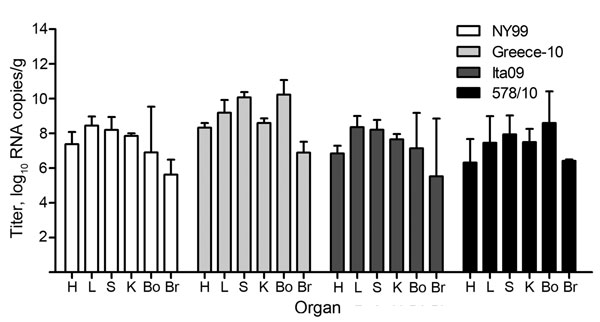Volume 21, Number 8—August 2015
Research
Susceptibility of Carrion Crows to Experimental Infection with Lineage 1 and 2 West Nile Viruses
Figure 5

Figure 5. Viral RNA copy numbers in organs from 22 carrion crows euthanized because of illness after being experimentally infected with 1 of 4 different West Nile virus strains (n = 6, per group). Copy numbers are represented as log-transformed medians; error bars indicate range. The assay had a detection limit of 9 (1.0 log10) RNA copies/g of tissue. H, heart; L, liver; S, spleen; K, kidney; Bo, bone marrow; Br, brain.
1These authors contributed equally to this article.
Page created: July 14, 2015
Page updated: July 14, 2015
Page reviewed: July 14, 2015
The conclusions, findings, and opinions expressed by authors contributing to this journal do not necessarily reflect the official position of the U.S. Department of Health and Human Services, the Public Health Service, the Centers for Disease Control and Prevention, or the authors' affiliated institutions. Use of trade names is for identification only and does not imply endorsement by any of the groups named above.